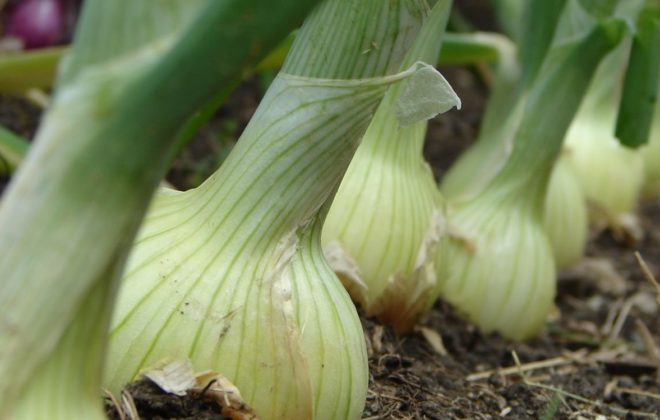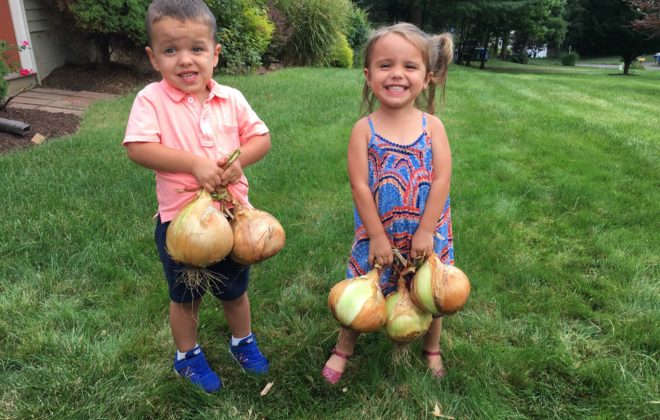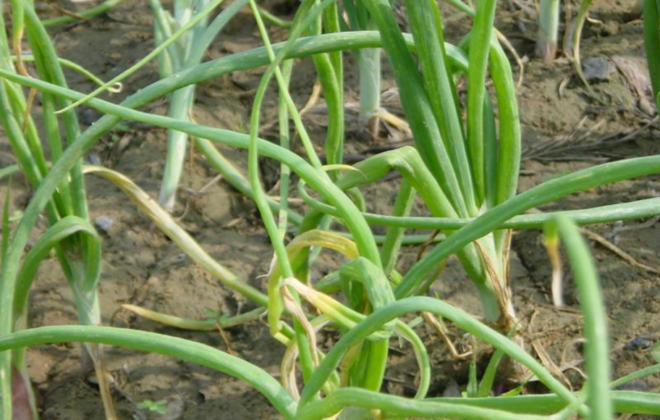Preserving Your Onions in Storage
Ensuring Maximum Storage Potential

You’ve spent countless hours in the garden, harvested your onions, and now it’s time to ensure they are stored properly so you can enjoy them as long as possible. Below are some tips for preserving your onion harvest.
Storage tips
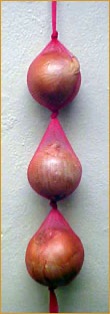
Once the onions are dry, cut the tops down to 1-2 inches long, and store them in a cool, dark, dry place with good air circulation. You can use fans to help keep the onions dry, which inhibits decay. Keep onions more than a foot away from the wall in order to keep airflow moving through the room.
Never store onions with potatoes (they emit moisture) or put them in plastic bags (lack of air circulation reduces shelf life). We recommend our mesh storage bags or mesh nettings. When properly dried, some onions can keep as long as mid-winter. Be sure to check your onions regularly and discard any that have gone soft or began to rot.
Separating Damaged Onions
Some onion storage diseases are caused by weather extremes and don’t become evident until your onions are in storage. Unfortunately, there are no fungicides that treat onions post harvest, but following these steps can help you avoid storage issues. Be sure to avoid storing any bulbs that are bruised, cut, diseased, or have green tops or thick necks. All of these expose moisture to the other onions and can lead to rotting.
Identifying Diseases in Storage
Wondering how to tell if your onions have disease in storage? Here’s a gallery of storage diseases you should be aware of so you can throw any onions that may be infected.
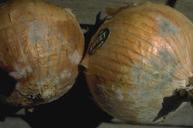
Blue-Green Mold is caused by excess moisture before harvest. The dusty green spores often appear when storage conditions are damp.
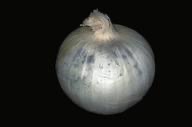
Black mold presents as sooty black spore masses. It enters through cuts or breaks in the skin or tops. High humidity and temperatures over 85° F promote its growth, and excess moisture in storage encourages its spread. Black mold lives on dead plant material as well as in the soil, so it’s vital to clean up the garden at the end of the season.
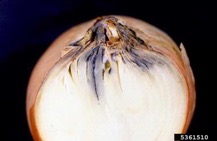
Neck Rot is caused by a fungus carried on the onion seed. The first signs appear 8-10 weeks into storage, when gray spore masses and sclerota, black patches up to an inch across, appear on the onion’s surface. This soon develops into a soft brown rot that moves into the bulb. The only way to avoid neck rot is to treat the seed itself with the right fungicide.
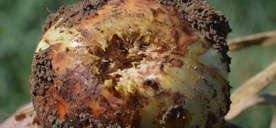
Fusarium Rot or Basal Plate Rot is caused by excessive heat during the growing phase. It starts at the base of the onion in heat exceeding about 80° F, and proceeds into the bulb as a watery rot and bacterial decay. It usually affects just a few onions, but can pass between onions in storage.
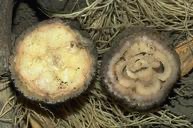
Bacterial Soft Rots can strike when the temperature exceeds about 85° F. These rots can be hard to recognize from the surface, because the onions may look sound; but when cut open, the inner rings will be brown and watery. Infected onions rot quickly, and have a pungent scent.
These pointers should help you with drying and preserving your onion harvest properly, so you can enjoy them well into the offseason!

